Candy Brands: Tootsie

All I want is a piece of chocolate candy that won't melt easily in the heat ... lucky for me, and millions of other candy consumers, Leo Hirshfield had the same idea! Hirshfield founded Tootsie Roll Industries in a small shop in New York City. The Tootsie Roll candy got its name after the nickname of his daughter, Clara "Tootsie" Hirshfield.
Originating in 1896, The Tootsie Roll Industries is now based in Chicago, Illinois as one of the country's largest candy companies. Among some of Tootsie's most popular candy names are:Read more
The Etymology of Forgotton Folks
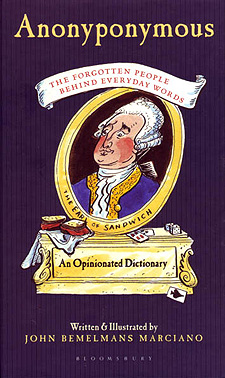
As namers, we use words like "neologisms," "hybrids," and "current usage words" with every project we work on. A neologism (from the French "new + body of knowledge") is a made-up word or something that has been coined for a specific purpose (ex: Aceba). A hybrid is two words fused together (ex: FunHub), while a current usage word is something you would find in the dictionary.
If you think about it, every word was at one point in time a neologism, a new word, something that someone made up. Someone had to fabricate it somewhere in history. Words become interesting parts of our vernacular when we have an association that gives them a new definition.
Anonyponymous: The Forgotten People Behind Everyday Words by John Marciano hits the shelves today, and takes a different approach at examining the origins of current usage words. Coining a word himself, John fuses "anonymous" with "epononym" to introduce a new word into our vocabulary; "anonyponymous" refers to eponyms that were created based on otherwise anonymous people in history. It provides some fascinating references to very obscure people (and moments) in history.
Read more
Candy Brands: The Foreign Candy Company
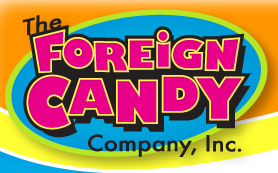
......................................................................................................................................................................
From the creators of Rips Licorice, Eiffel Bon Bons, Big Fat Hissee Fit, and many more, I present to you… The Foreign Candy Company, Inc. This brand thrives on delivering fun, flavorful, and unique candies that are loved by both kids and adults.
The story behind this brand is one that began in 1976 when Peter W. De Yager stumbled onto an overnight success. Yager, who was a high school German teacher at the time this adventure began, started taking his students on trips abroad. After one trip to a gummy bear factory in Germany, the students decided to sell their candy as a fundraiser to raise money for the next year’s trip. It turns out that selling foreign candy was a huge success, so Yager decided to begin selling the candy across the country.Read more
Jumping on the Brandwagon
As a Charlotte resident and pseudo Carolina Panther’s fan, it’s basically required by Mecklenburg County law as an excuse to drink to watch their games on Sunday afternoons (well that is if you can’t get into a good marathon of America’s Next Top Model). Recently though, I’ve noticed that many players’ wardrobes have added a certain splash of color to their usual blue and black palette: pink. These “Pink Panthers”, as they have been trademarked, have been sporting everything from pink wrist bands to pink towels to even pink gloves. What makes the average 250 lb beefy staple of an athlete accessorize with the world’s most feminine color? They, like many other athletes across the U.S., have been showing their support for Breast Cancer Awareness. Read more
Candy Brands: Ferrara Pan
Friends and family will likely remember "Paula's Red Hot Marathon of 2006." No, it wasn't a fiery run; it was my shamless order of three cases of Red Hots direct from the manufacturer to be shipped to my door, and the consumption that ensued. I'm blaming the new baby hormones.
Red Hots have always been my candy of choice. There's something about that hot flavor getting stuck in my teeth that epitomizes how a candy should behave. And let me clarify: Red Hots are the BRAND; the generics are called cinnamon imperials. I've had the knock-offs, and believe me, there is only one Red Hot.
Ferrara Pan is the creator of the Red Hot, and the company brand has an interesting history. Created as a namesake for the founder, Salvatore Ferrara, Ferrara Pan was founded in 1908 in Chicago, Illinois. The word "pan" in the company name indicates that some of the candy they make is "panned". This process involves building candy pieces from single units, such as grains of sugar, nuts or candy centers, tossing them in revolving pans while adding the flavor, color and other candy ingredients. This process continues until the pieces become the desired size. Finally, the candy gets a high polish with an edible vegetable wax, which gives it an attractive appearance.
In terms of branding, the company has retained a functional, yet personality-infused continuity with its line of products: Red Hots, LemonHead, Atomic FireBall, Jaw Busters, Boston Baked Beans, Black Forest Gummies, and Ferrara Chocolates. With the exception of the Boston Baked Beans, I can look at their candy lineup and know exactly what I'm getting.
Check out the company's virtual tours of "How Panned Candy Is Made." And if you see a box (or bag) of Red Hots at the convenience store, pick one up for me.
Candy Brands: HARIBO
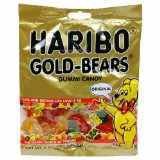
Maybe it's our sense of whimsy ... Maybe it's our roots as hunter/gatherers ... whatever the explanation, whether you prefer a handful of cheesy goldfish or a fresh box of animal crackers, there is no denying the fun in biting into something that could bite you back.
The gummi bear is arguably the king of critter-shaped snacks, and HARIBO, a German confectionary company founded in 1920, proudly distinguishes itself from the candy masses as the original creator of these malleable mammals. Today, HARIBO is the biggest manufacturer of gummy and jelly candies in the world.
The gummi bear, (known as Gummibar or rubber bear in German), was created after World War II and introduced in the 1960s under the brand Gold-Bears. An instant success, the product has since seen several flavor and shape variations, with brand extensions such as Snack-packs, Roulettes, and Happy Cola. More intriguing sub-brands like Starmix, Tangfastics, Kiddies Supermix, Maoam and Strawbs can be found abroad. The candy even inspired a late 80s television show, Disney's Adventures of the Gummi Bears (though I personally found that to be the least palatable of the brand's many extensions).
Although Trolli and many others have created formidable gummi competition, the original Gold Bears, with their iconic gold, red and black packaging, have dominated their space for a half-century and show no signs of slowing down. After all, as the tagline says, "kids and grown-ups love it so, the happy world of HARIBO."
And if you were wondering, there is a reason why HARIBO appears in all-caps; the name is an acronym--borrowing the first two letters of the founder's first and last name, Hans Riegel, as well as the first two letters of the location of the corporate headquarters in Bonn, Germany.
Contributed by: Maghan Cook
For the Love of Words ...

......................................................................................................................................................................
Here at Addison Whitney, the Verbal Branding Department is geared up and ready for National Dictionary Day celebrated on October 16th, 2009! This day in history has been dubbed Dictionary Day in honor of the birthday of Noah Webster, Father of the Dictionary.
How do you plan on spending this National Holiday? Here are a few suggestions: Play a game of Scrabble, Make a list of all your favorite words, Complete a crossword puzzle, or Eat a bowl of alphabet soup. Whatever is it you choose to do, at least take a moment to pause and think what a different place our world would be without words and the meanings we have attached to them ...
Contributed by: Carrie Friedrich
Makeover for the King

......................................................................................................................................................................
Recently, the fast-food chain restaurant Burger King has decided to undergo a restaurant makeover with a new store design called "20/20". This high priced renovation project was first unveiled at the Amsterdam Schiphol Airport location on October 7th, 2009. CEO John Chidsey had this to say about the recent changes; "As we continue to grow and strengthen the brand worldwide, this new restaurant design exemplifies our vision for the brand's future and reinforces our goal of delivering superior products and positive guest experiences." Burger King's recent sales have fallen well below top competitors McDonald's and Wendy's; the store re-design is a "top-tier global brand initiative" to increase Burger King's global reputation and boost sales.
How synonymous are the phrases, 'fast-food restaurant' and 'intimate dining experience'? According to an AP Report, this remodeling project will come with a heavy bill, approximately $300,000 to $600,000 per restaurant. Some consumers are worried that this may not be the best use of money for the franchise. Is Burger King trying to become something that it's not? How successful will this intimate dining experience be for the burger chain?
Burger King is well aware that their brand needs to make some changes in order to keep up with other fast-food chains in the market, but is this the right approach?
View the full article on Ad Age.
Contributed by: Carrie Friedrich
PB & Fluff
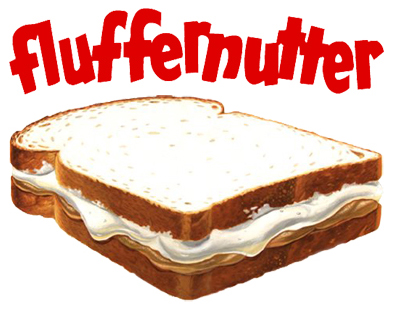
As a self-proclaimed foodie, I'm excited to announce today is National Fluffernutter Day! Health nuts take heed: this fun-to-say day celebrates the unlikely fusion of the marshmallow brand Fluff with peanut butter (brand of choice), typically served on white bread.
According to Wikipedia, "Fluffernutter" is a registered trademark of Durkee-Mower Inc., the maker of "Marshmallow Fluff" brand marshmallow creme. However, Durkee-Mower's US trademark registrations for Fluffernutter cover only ice cream and printed recipes. In 2006, Durkee-Mower sued Williams-Sonoma Inc. in the United States District Court for the District of Massachusetts, alleging that Williams-Sonoma was selling a marshmallow and peanut butter chocolate-covered candy under the "Fluffernutter" name."
This unique combination was recently nominated as the state sandwich of Massachusetts. If Massachusetts gives the honor to the Fluffernutter, it will become the only state with a sweet official sandwich.
"Nattyisms"
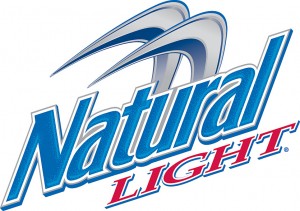
......................................................................................................................................................................
Coining new words and phrases as a branding strategy seems to be rising in popularity among today’s advertising campaigns. Natural Light, who primarily focuses on a target audience of drinkers aged 21 – 35, has created an entire advertising campaign focused on coined words and humor to give their brand a fresh new edge. During recent times, beer drinkers have been shifting towards cheaper beers. In accordance with this shift, Natural Light Beer, a division of Anheuser-Busch, has revealed its first television advertising campaign in Read more
